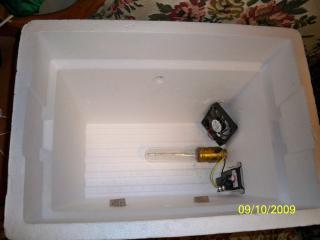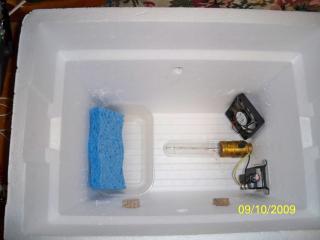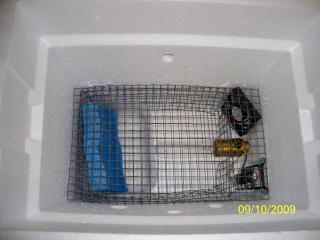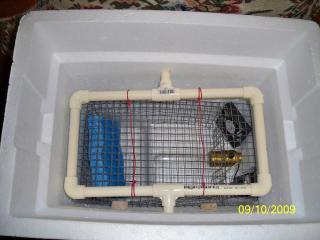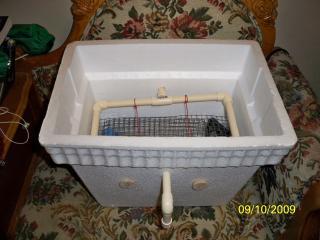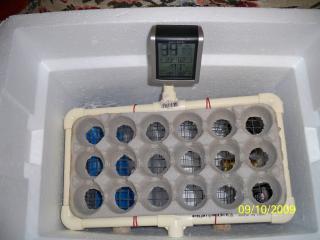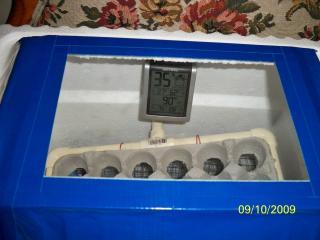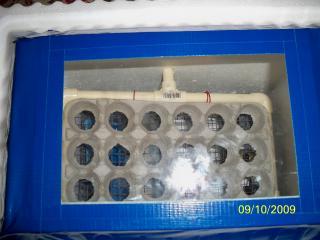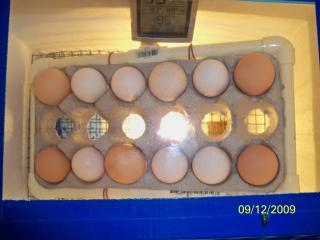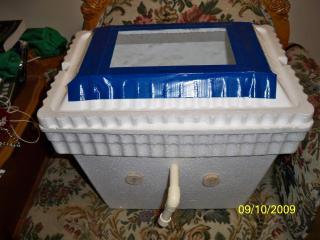Here are the latest pictures of the finished incubator.
These two show the bottom of the cooler with the light, fan, and thermostat in place; and then the addition of a small container to hold water and a sponge.
From there, we added a wire shelf using hardware cloth, for the eggs and chicks to rest on during the hatching period. The right pic shows the empty egg turner frame in place above the shelf.
This is how it looks from the front showing the handle for the egg turner. The next pic shows the placement of the hygrometer on the back wall of the incubator, above the egg turner frame.
Here's a view of the thermometer and the egg tray from the outside of the 'bator, as seen by looking through the top window.
Last but not least, here's a top view of the eggs we're incubating, although we added some more eggs the next day to completely fill the tray. The final picture shows the completed unit with all the trimmings.
I hope you liked our incubator gallery! Feel free to post any comments or inquiries.



